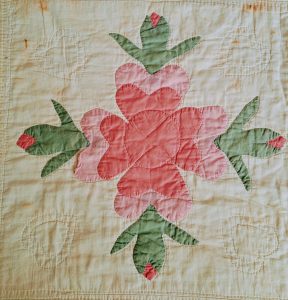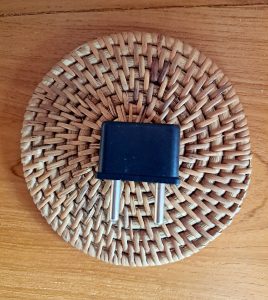13 Cultural Artifact Exercise
“A pluralist, cosmopolitan society is a society which not only accepts difference, but actively seeks to understand it and to learn from it. Pluralism respects the role of individual identity in building a richer world”. – Aga Khan lV
My friend and colleague, Dr. Elena Kolesova, has taught university courses in Intercultural Communication on campuses in New Zealand, Japan and Kyrgyzstan and often uses this activity to start her courses. We used the “Cultural Artifact Exercise” for an online intercultural skills workshop that we co-facilitated with faculty. Many people were still unable to travel during the pandemic, so we had faculty members joining from their homes all over the world and sharing artifacts that could help us understand their cultural backgrounds and values. This exercise provides a valuable introduction for discussions about cultural theory, cross cultural communication and aspects of visible and invisible culture.
Purpose
Culture has many layers and hidden dimensions. This excercise helps build understanding of the cultural dimensions participants are bringing to the learning community.
Learning Objectives
Participants will
- Reflect on what physical artifact could help them explain aspects of their culture to others.
- Explore aspects of visible and invisible culture.
- Become better acquainted with the cultural backgrounds and values of their group mates.
Activity Directions
1. Explain activity: Tell students ahead of the class that they need to select an artifact that tells a story about their cultural background that they can share with the class. This artifact can be a picture or an object (a piece of clothing, jewelry, a tool etc.). If possible, ask them to choose an item that illustrates something about their cultural background that is not obvious so that they can use their artifact to teach the group something about their background. Let them know they will have 3-5 minutes to talk to the class about the artifact they chose.
2. Present Artifact: At the begining of the workshop remind students to discuss their reasons for selecting the artifact, what it means to them, and how it represents their culture. (The facilitator could start by sharing their cultural artifact to model reflecting on deeper aspects of culture).
3. Explain the cultural iceberg: Have a group discussion about visible and invisible culture. An artifact is a visible aspect of culture, but what do your objects also tell you about the invisible parts of your cultures?
Cultural Iceberg
Culture is sometimes described as an iceberg where there are visible aspects (clothes, food, ceremonies) but 90% of it is hidden below the surface. The parts of the iceberg below visibility can include values, communication patterns, power structures, gender roles, traditions, beliefs, taboos, concepts of hospitality, etiquette and so much more.
3. Dyad discussion: After the presentations, ask participants to pair up and discuss their experiences and insights. Post the following questions for pairs to discuss:
- What was the purpose of this activity?
- Where do stereo-types come from? How does your chosen artifact either conform or not conform to stereo-types of your culture?
- Have you had any experiences where you made assumptions about people based on their “surface culture” but later learned about aspects of their “deeper culture” that changed your understanding of that person or group of people?
- How does the difference between how you perceive yourself and how others perceive you affect you as a participant?
- What have you learned about culture (yours and others’) during this exploration?
4. Full Group Discussion: Ask volunteers to share with the whole group their reflections. You may want to display all the artifacts in a mandala in the center of the room and ask participants what they observe about the group’s culture when they see all the artifacts together.
Examples of Cultural Artifacts
 Rosa: “I chose to show you this quilt. It was made by my great great grandmother as a wedding present for my great grandma. They lived on a farm in Wisconsin, but were immigrants from Germany. I don’t know if quilting was a part of their German tradition or rural American culture, but I know my Mom and Grandma loved it. It hung in my Mom’s bedroom on the wall because it is too old and fragile to put on the bed. It has tiny stitches and even some spots of blood from someone pricking their fingers with a needle while making it. It just reminds me that my people were hard working farmers, but also took time to make something of beauty. My family’s culture still has a really fierce work ethic which is sometimes hard for me because there are a lot of expectations on me to be successful.”
Rosa: “I chose to show you this quilt. It was made by my great great grandmother as a wedding present for my great grandma. They lived on a farm in Wisconsin, but were immigrants from Germany. I don’t know if quilting was a part of their German tradition or rural American culture, but I know my Mom and Grandma loved it. It hung in my Mom’s bedroom on the wall because it is too old and fragile to put on the bed. It has tiny stitches and even some spots of blood from someone pricking their fingers with a needle while making it. It just reminds me that my people were hard working farmers, but also took time to make something of beauty. My family’s culture still has a really fierce work ethic which is sometimes hard for me because there are a lot of expectations on me to be successful.”
 Hakim: “I chose this plug adaptor as my cultural artifact because it represents the fact that I grew up in Canada, but my mother was born in Malaysia. When we visit her family in Kuala Lumpur we always need to bring these adaptors for our electronics, but it also seems like I need to switch from my Canadian context and social behaviors and try my best to adapt and understand my Malaysian heritage. My Mom and her family are Muslim, but my Dad and most of my Canadian friends are not, so it is sometimes confusing for me to figure out what I believe and which parts of both cultures matter to me. When I return to Canada I change the plugs again, but also go through reverse culture shock figuring out how to fit into my Canadian situation again.
Hakim: “I chose this plug adaptor as my cultural artifact because it represents the fact that I grew up in Canada, but my mother was born in Malaysia. When we visit her family in Kuala Lumpur we always need to bring these adaptors for our electronics, but it also seems like I need to switch from my Canadian context and social behaviors and try my best to adapt and understand my Malaysian heritage. My Mom and her family are Muslim, but my Dad and most of my Canadian friends are not, so it is sometimes confusing for me to figure out what I believe and which parts of both cultures matter to me. When I return to Canada I change the plugs again, but also go through reverse culture shock figuring out how to fit into my Canadian situation again.
This adaptor is me switching to different currents of culture and finding ways to be comfortable with all the different parts of myself. I think having these two very distinct backgrounds makes me more of a global citizen, but it can also be confusing and stressful figuring out who I am in these two very different worlds.”
Resource:
self-awareness/cultural-artifacts
This resource presents this activity as an ice-breaker for a university composition class and extends it into a writing assignment.
